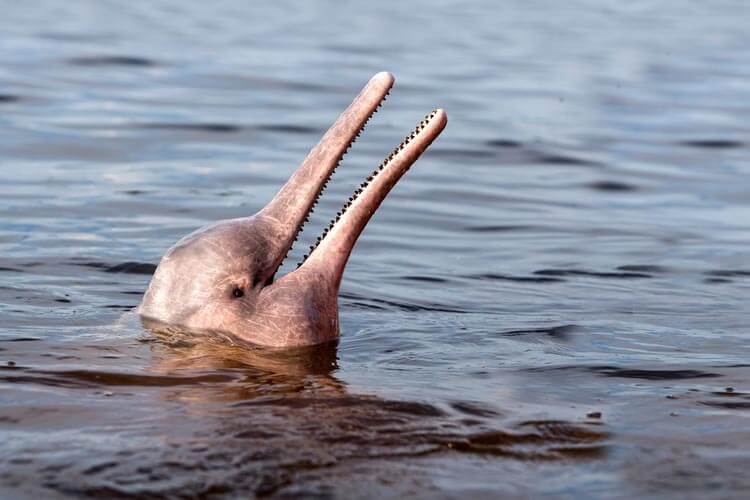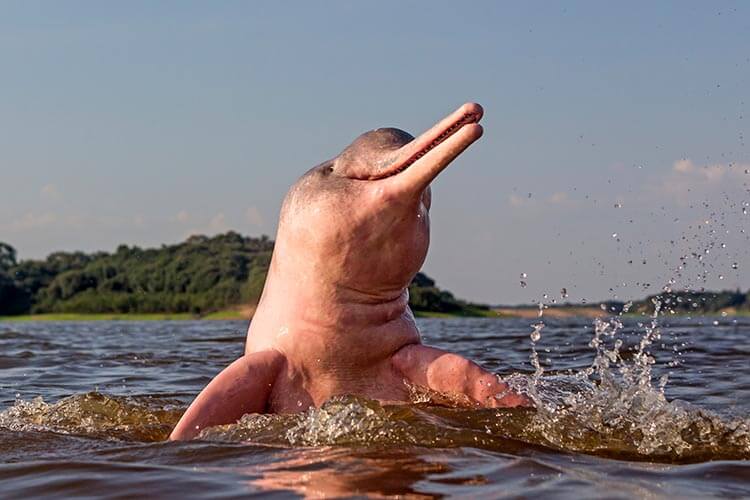
Scientists suspect heat and severe drought led to mass death of iconic pink Amazon river dolphins
Temperatures in parts of the Brazilian Amazon hit 39 degrees last week. Communities along the River Tefé, a tributary of the Amazon River, struggled with the heat and drought, some of them isolated from sources of clean water or the usual river-based transport links.
Then the floating carcasses of Amazon river dolphins started appearing.
So far, 120 dead river dolphins have been retrieved from the area. Scientists from the Brazilian Government’s Chico Mendes Institute for Biodiversity Conservation, who manage conservation areas in the region, are conducting autopsies to investigate the cause of death.
While they do not yet know with certainty what has caused the mass die-off, there is widespread concern it may be related to high temperatures. The low river levels as a result of the drought may have caused water temperatures to soar to an unendurable degree for the dolphins.
On Thursday, waters in the Tefé hit 39 degrees centigrade – as much as 10 degrees higher than the river’s average temperature for this time of year – almost certainly a result of climate change and the El Niño weather phenomenon currently active over the Pacific.
Related articles

Eight out of ten of the deceased animals were pink river dolphins (Inia geoffrensis), known locally as ‘botos’. Loved for their unique pink-tinged skin, the dolphins are currently listed as ‘Endangered’ on the International Union for Conservation of Nature’s Red List of Threatened Species.
According to the Mamiraua Institute, a government research centre for the area, an estimated 10 per cent of River Tefé’s boto population could have been wiped out in this die-off.
Grey river dolphins (Sotalia fluviatilis) – or ‘tucuxi’ – were also among the casualties. Thousands of fish were also seen to have died.
‘The past month in Tefé has seemed like a science-fiction climate-change scenario,’ Daniel Tregidgo, a British researcher living in the area, told the Guardian. ‘To know that one has died is sad, but to see piles of carcasses, knowing that this drought has killed over 100, is a tragedy.’
There are only six species of river dolphin thought to be left in the world, all of which are listed by the IUCN as Endangered or Critically Endangered. The WWF considers the dolphins to be ‘a sign of overall river health’. Wherever dolphins thrive, river systems are generally in good working order.
Unfortunately, these niches are becoming increasingly rarer as temperatures rise as a result of human-caused climate change and the Amazon River becomes more polluted by wastewater, pharmaceuticals and agricultural chemicals.
The River Tefé is thought to be home to around 1,400 river dolphins. And with temperatures set to rise again next week, the Chico Mendes Institute is urging quick action to rescue the remaining dolphin populations in River Tefé by moving the pods to cooler waters.
However, veterinarians and scientists have urged caution, as researchers are still ruling out a bacterial infection as a possible cause of death.


